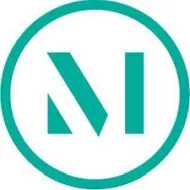The U.S. Court of Appeals for the Ninth Circuit affirmed the district court's finding of an unlimited, non-exclusive and implied license to use, modify and retain the source code of programs developed by a contractor for a company, relying on the course of dealings between the parties. Asset Marketing Systems, Inc v. Kevin Gagnon, d/b/a/ Mister Computer, Case No. 07-55217 (9th. Cir., Sept. 9, 2008) (Smith, J.).
Asset Marketing Systems (AMS) is a field marketing organization offering sales and marketing support to insurance marketing entities. From May 1999 to September 2003, Kevin Gagnon was an at-will, independent contractor for AMS, hired to assist with its information technology needs.
In May 2000, AMS and Gagnon entered and executed a Technical Services Agreement (TSA), which was scheduled to expire on April 30, 2001. The services included "Custom Application Programming—[under which] Consultant will provide Contractor with specific add-on products to enhance Contractor's current in-house database application," but mentioned nothing about a license.
In June 2003, Gagnon asked that AMS execute an Outside Vendor Agreement (OVA). The OVA included a proprietary rights clause providing, in relevant part, that "Client agrees that all ... inventions ... produced by Contractor while performing services under this agreement will be the property of Contractor and will be licensed to Client on a non-exclusive basis." AMS did not sign this proposed agreement. Instead, AMS countered with its own proposal that stated, in relevant part, "Contractor agrees that all ... inventions ... produced by Contractor while performing services under this agreement will be the sole property of Client. Any source code or intellectual property agreed to and documented as Contractor's will remain the property of Contractor." Gagnon did not sign this proposal. By the end of June 2003, AMS terminated Gagnon's services. AMS offer Gagnon a job, but he declined the offer.
After terminating the agreement, AMS sued Gagnon in California Superior Court alleging, among other things, misappropriation of trade secrets and conversion. Gagnon removed to federal court. After a convoluted procedural history, the district court found that Gagnon had granted AMS an implied, non-exclusive license to use, modify and retain the source code of the programs and thus they did not infringe his copyrights. Gagnon appealed.
The Ninth Circuit looked to its previous ruling in Effects Associates. v. Cohen, which considered the grant of an implied license in the context of movie footage and architectural drawings. The Court said that an implied license is granted when "(1) a person (the licensee) requests the creation of a work, (2) the creator (the licensor) makes that particular work and delivers it to the licensee who requested it, and (3) the licensor intends that the licensee-requestor copy and distribute his work."
Rejecting Gagnon's arguments, the Court concluded that the first and second factors in its previous ruling both favored AMS. In determining whether Gagnon intended that AMS copy and distribute the programs, the Court focused on his objective intent at the time he created and delivered the software as manifested by the parties' conduct.
The Court noted that nothing in the TSA indicates Gagnon's understanding or intent that continued use of the custom application programming would be prohibited after the TSA terminated. Under these circumstances, it defies logic, according to the Court, that AMS would have paid Gagnon for his programming services if AMS could not have used the programs without further payment pursuant to a separate licensing arrangement that was never mentioned in the TSA. The Court also highlighted the fact that Gagnon and AMS did not discuss a licensing agreement until their relationship was ending.
In the end, the Court stated that "[a] belated statement that the programs could not be used after Gagnon's departure, made after the termination decision and well after the creation and delivery of the programs for which substantial sums were paid, was not sufficient to negate all other objective manifestations of intent to grant AMS an unlimited license." Thus, the Court affirmed the district court's ruling that Gagnon granted AMS an unlimited, non-exclusive license to retain, use and modify the software.
Practice Note: Although AMS prevailed on the facts of this case, it is always best practice to define the ownership of intellectual property at the time of contracting.
The content of this article is intended to provide a general guide to the subject matter. Specialist advice should be sought about your specific circumstances.


